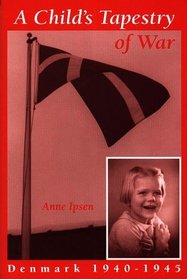Search -
A Child's Tapestry of War
A Child's Tapestry of War
Author:
Anne Ipsen's memoir of her Danish childhood is bathed in the light of long summer evenings and the love of doting parents. But the evocative, artful strands that weave this story are interlaced with the menace and cruelty of the Nazi occupation of Denmark during World War II. — This chronicle of a childhood in Denmark spins homey images: a mo... more »
Author:
Anne Ipsen's memoir of her Danish childhood is bathed in the light of long summer evenings and the love of doting parents. But the evocative, artful strands that weave this story are interlaced with the menace and cruelty of the Nazi occupation of Denmark during World War II. — This chronicle of a childhood in Denmark spins homey images: a mo... more »
ISBN-13: 9781890676117
ISBN-10: 189067611X
Publication Date: 6/1/1998
Pages: 238
Rating: ?
ISBN-10: 189067611X
Publication Date: 6/1/1998
Pages: 238
Rating: ?
0 stars, based on 0 rating
Publisher: Beaver's Pond Press
Book Type: Paperback
Members Wishing: 1
Reviews: Amazon | Write a Review
Book Type: Paperback
Members Wishing: 1
Reviews: Amazon | Write a Review
Genres:
- Biographies & Memoirs >> Memoirs
- History >> Europe >> Denmark




